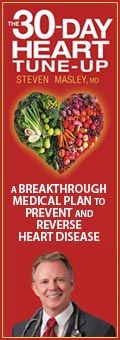Ventricular septal Defect
A ventricular septal defect is heart defect, it is in fact an opening in the upper part of the interventricular septum that has become due to nonunion with the aortic septum. In this way, the blood passes from the left ventricle where is the high pressure to the right ventricular, where the pressure is low. In 1/4 to 1/3 of cases, shunt is not large enough to lead to tension in the heart. In the case of large shunts, there is a tension in the right and left ventricle. Ventricular septal defect is the most common congenital heart defect. Heart with ventricular septal defect have a hole (“hole” unnatural communication) in the wall between the ventricles. It can appear as a single, isolated disorder or in combination with other birth defects.
Ventricular septal defect may also be acquired during the life, for example, after acute myocardial infarction. It is divided into several categories, depending on the location and appearance of edges of the defect. The clinical significance of ventricular septal defect depends on the size, location, level of blood pressure in the lungs and resistance in the left ventricle. Small ventricular septal defect causes slight mixing of blood between the chambers and does not cause significant disturbance of dynamics of blood. In contrast, a large ventricular septal defect can slowly but surely lead to increased pressure in the lungs, pulmonary vascular resistance, irreversible changes in the pulmonary blood vessels and eventually to the Eisenmenger syndrome (blood flow between the chambers is reverse, from right to left ventricle).
Ventricular septal defect causes a characteristic heart murmur and recurrent infections of the upper respiratory system. The larger ventricular septal defect require surgical closure, which usually has an excellent outcome.
The clinical picture of ventricular septal defect
Symptoms and signs of ventricular septal defect
The clinical picture depends on the diameter of the defect and the presence or absence of increased pulmonary vascular resistance. If the defect is small left to right shunt is small, if the defect is large, the resistance of blood flow between the two ventricles is small, so is the left-right shunt is large, increased pulmonary vascular resistance decreases left to right shunt and converts systolic murmur in the one-sided murmur.
In the third and fourth intercostals space along the sternum a loud, rasping systolic murmur can be heard a long. This may not be the only finding of small defects. In the case of large shunts at the top of the heart you can seen raising of the right ventricle, mid diastolic murmur and the third tone can be heard.
Radiographic findings of ventricular septal defect
In large shunt, right or left ventricular or both, as the left atrium and pulmonary arteries were enlarged, and the pulmonary flow is increased.
ECG of ventricular septal defect
ECG may be normal or ECG may show hypertrophy of the right, left or both ventricles.
Special tests for ventricular septal defect
With cardiac catheterization, it is possible to diagnose even the most difficult cases. In children with cardiac decompensation is necessary to establish a diagnosis and advise appropriate treatment.
Treatment for ventricular septal defect
Ventricular septum defect can be asymptomatic with normal hemodynamics of the heart. However, in children, it can be a serious flaw, that results in death due to cardiac decompensation. These patients should undergo surgery. Ideal case for surgery with the use of the machine for extracorporeal circulation is the one with the big left-right shunt, left ventricular hypertrophy, and only moderate pulmonary hypertension. When it comes to elevated pulmonary hypertension (pulmonary artery pressure > 85 mm Hg), and left-right shunt is small, then the risk of surgery is at least 50%.
Surgical intervention is contraindicated if the shunt is reverse. However, if a surgical intervention is necessary in the case of cardiac decompensation caused by large left-right shunt, placing a ring around the pulmonary artery, which will reduce shunt, is recommended. Only in children of 5-6 years of age it is necessary to make a definitive correction. Based on the increasing experience it has been concluded that some defects are closed spontaneously (perhaps 30 – 50%). Therefore, surgery should be delayed until late childhood, except in cases where the inability is very strong or when it is concluded that pulmonary hypertension is increasing.
Prognosis for ventricular septal defect
Patients with typical murmur can expect a normal life, except that they can always develop bacterial endocarditis. With large shunts in early childhood a congestive heart occurs and these patients rarely survive 40 years of age. Reverse shunt encountered in about 25% of cases and leads to a Eisenmenger syndrome.
You may also like:
- The Blalock Taussig shunt
The Blalock Taussig shunt is a temporary surgical operation that is performed on newborn babies. The Blalock Taussig shunt is done when the heart is not delivering enough blood enriched with oxygen to the rest of the body.
- Glenn shunt procedure and bidirectional Glenn shunt surgery
Glenn shunt is a temporary treatment that is applied on children (preceding the Fontan procedure) to improve blood flow to the lungs.
- Fontan procedure
The Fontan procedure is an open heart surgical procedure used in children with a defect in the structure of the heart and great vessels which are present at birth.



